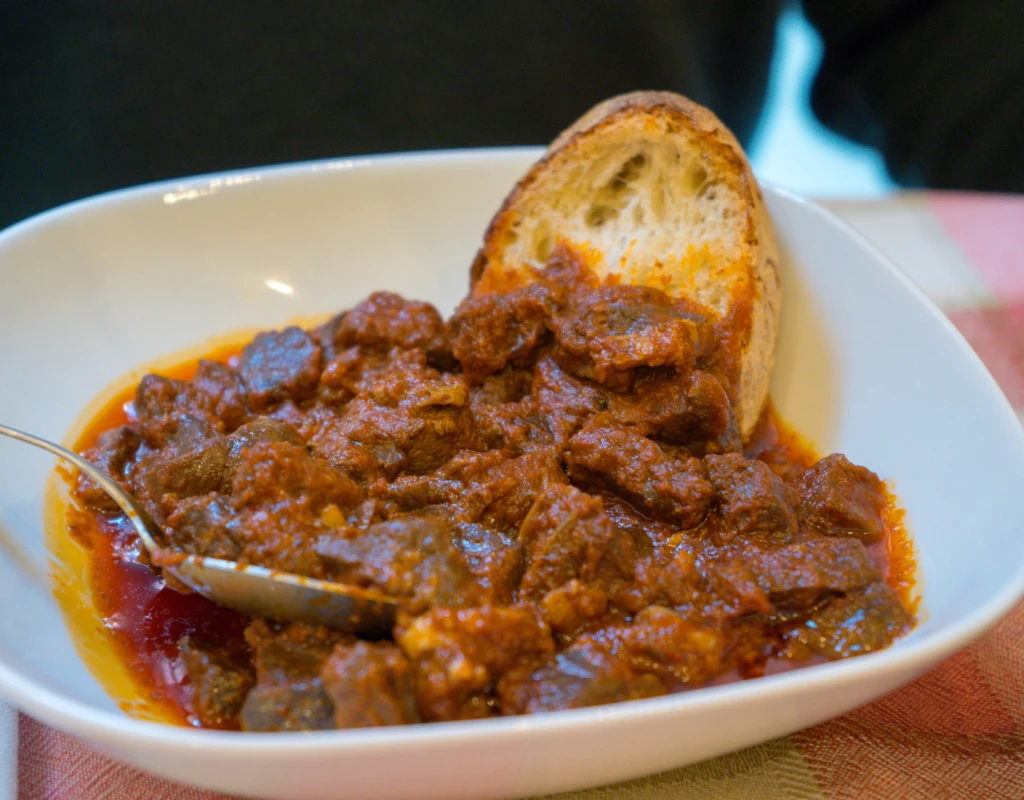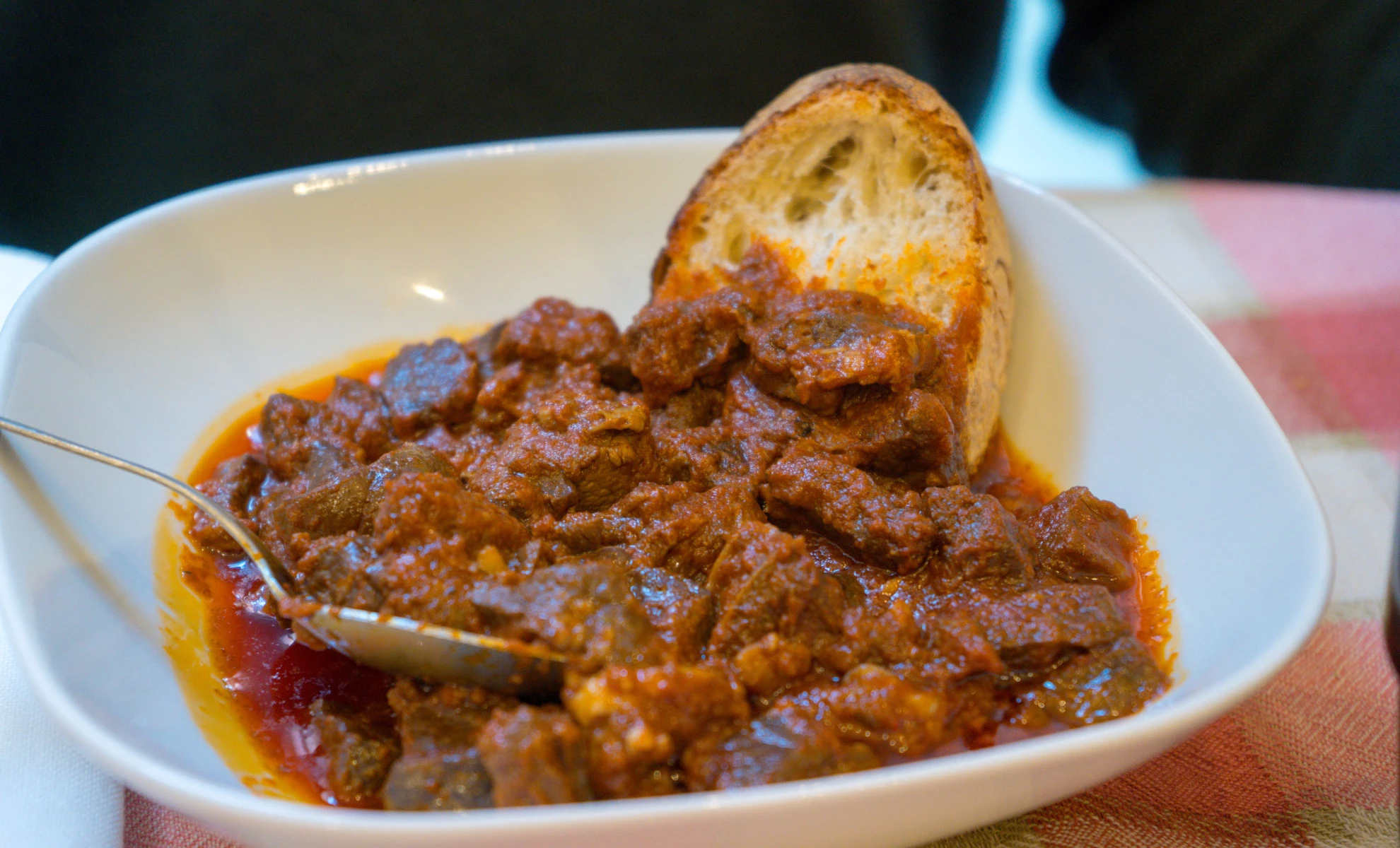Steaming pots overflowing with a bright red sauce, made even more dense by the tomato paste. The scent of pork entrails, softened by browning in lard and long cooking. The spicy Neapolitan soup, otherwise called ‘o suffritto, is a joy of clear and decisive flavors. No room is left for compromise in this recipe.
The Neapolitan strong soup | Ph. Enrico Nocera
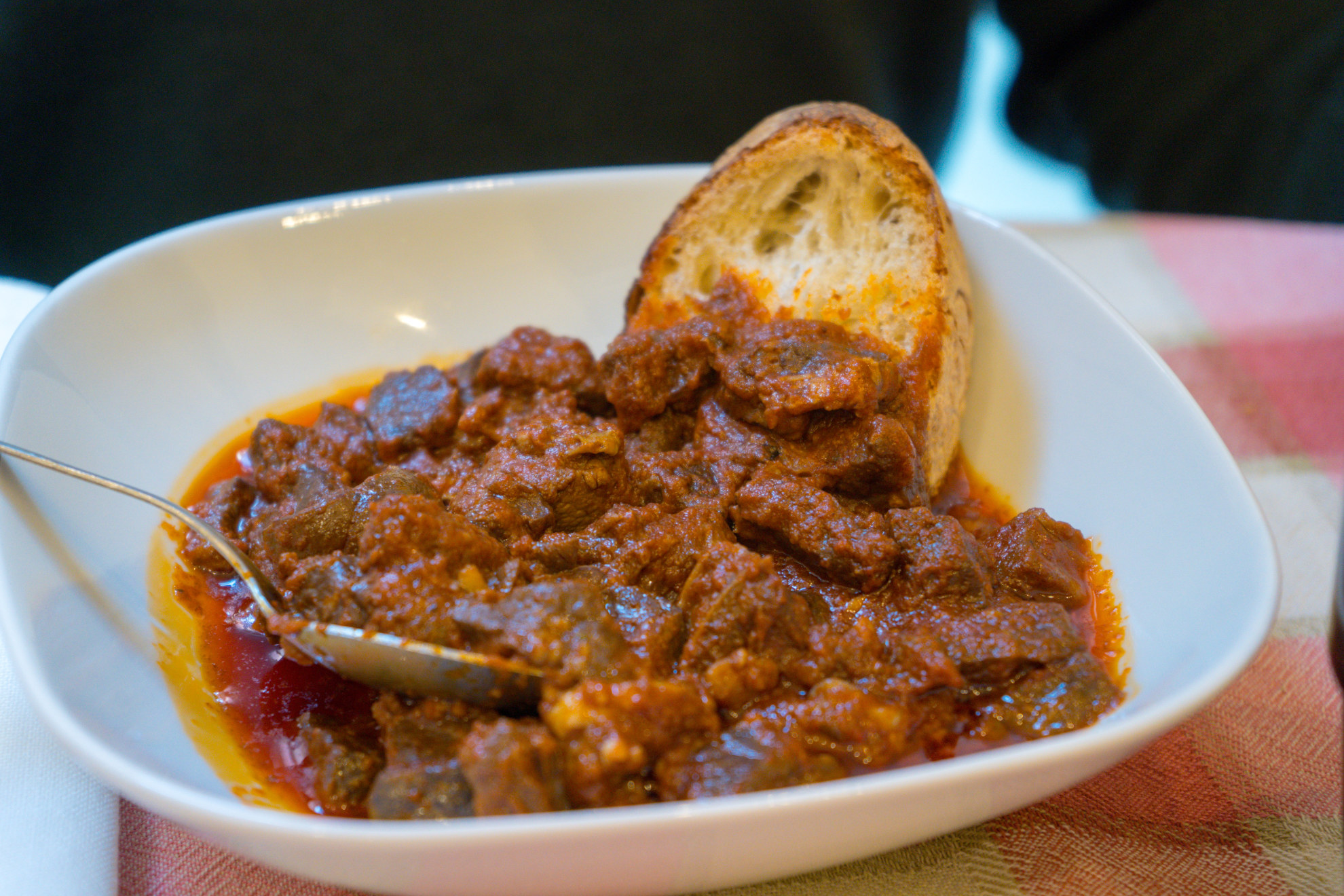
Years ago, the killing of the pig was a ritual that involved the whole family. The meat of the pig, raised at home, was divided among all the family members. And since nothing of it goes wasted, throwing away the entrails would have sounded at least like a curse. The Neapolitan strong soup was born with the idea of using everything, in fact the animal’s heart, spleen, trachea and lung are the main ingredients.
Sugna, extra virgin olive oil, tomato paste, red wine, bay leaves, chilli pepper, garlic and rosemary complete the recipe. The entrails are first browned in oil and lard (because you can never waste anything!), accompanied by chilli, bay leaves, garlic and rosemary. After blending with a little red wine, cooking continues - for about an hour - with the tomato paste. The result is a thick, spicy and savory sauce, accompanied by the full and satisfying taste of the entrails. What in Naples is called calloso (dense dish).
“When we didn't have tomatoes or peppers, we ate zuffritto, a traditional Neapolitan soup, humble and proletarian”“The Neapolitan Cuisine” by Jeanne Carola Francesconi
Small linguistic parenthesis, strictly connected to the recipe: calloso, in Neapolitan, has nothing to do with callus. It is a substantially untranslatable term in other languages, which indicates dishes with a consistency that is neither too stringy, nor too soft, nor too crunchy. A right consistency which is a middle ground between those mentioned above. Callosa, precisely.
The entrails of the pig ready to be cooked | Ph. Enrico Nocera
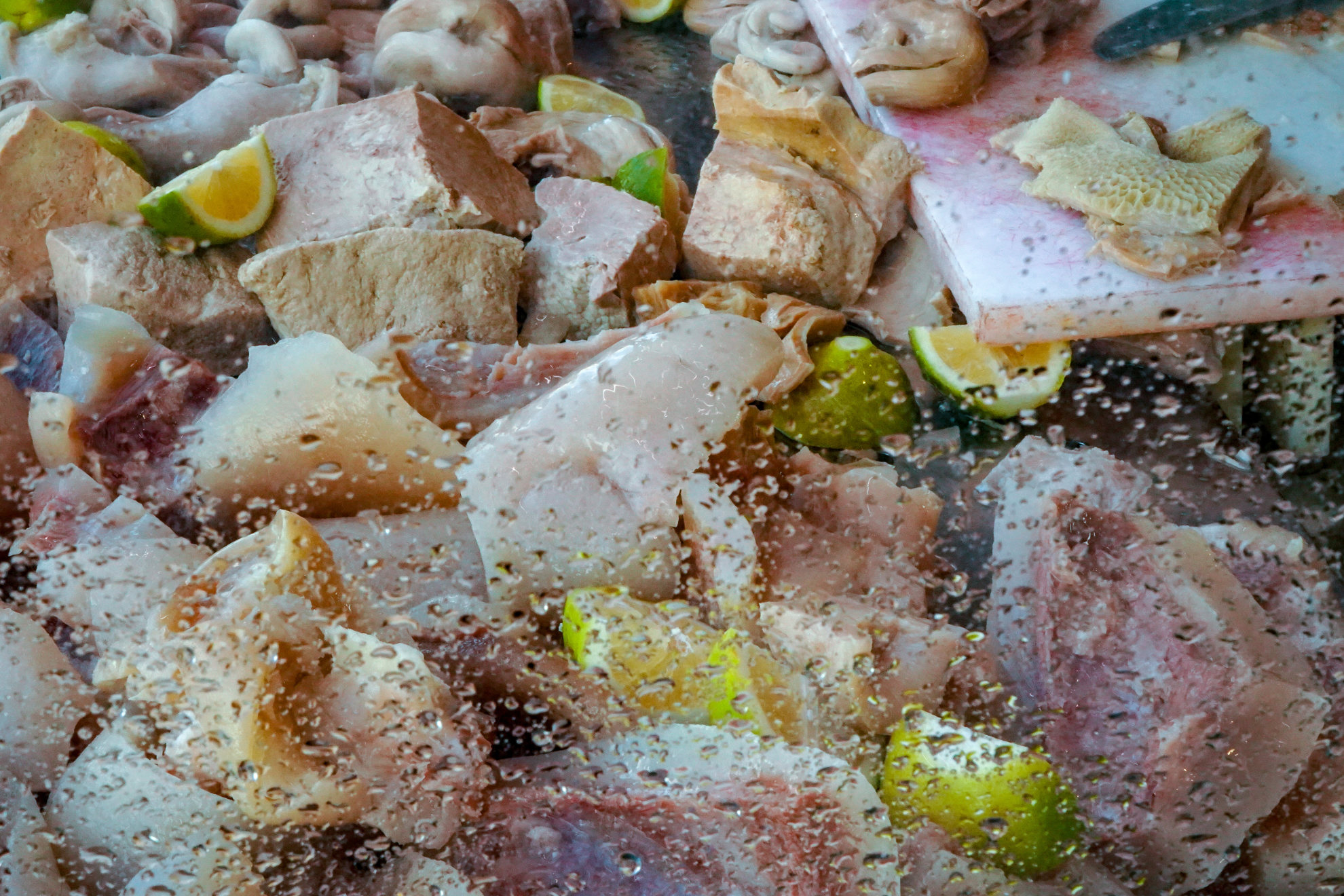
Continuing on the linguistic and etymological ridge, the reason for the name of the dish is easily understandable: it is called spicy soup because it is prepared with a generous dose of chilli. ‘O suffritto, alternatively, because the entrails are fried for a long time in a pan, following the procedure we have described.
Always a symbol of Neapolitan popular cuisine, this dish is still appreciated today on many tables in the city and its populous province, so much so that it is often prepared in a “gourmet” way by taverns and restaurants. ‘O suffritto unites everyone: the local tavern, with dishes overflowing with sauce and slices of bread to dip into the soup, and the high-class restaurant, which offers recipes with spaghetti or bucatini to accompany the entrails.
“Currite cannaruti, ca mo’ proprio l′accuppatura de lo tosciano. È cuotto, e tengo pure na veppetella d’amarena che co l′addore te rezorzeta no muorto; currite ‘mbreacune, a sei trise la carrafa e tengo la mangiaguerra pure a doje trise”
“Run hungry people, who have just come out the best of soffritto. It is cooked, and I also have a small glass of black cherry which with its perfume revives a dead person; run drunk people, with six tornese coins the carafe and for two tornese coins I also have the Mangiaguerra wine”From a comedy of Pietro Signorelli
A more contemporary trend suggests to use this strong soup even as a pizza topping! On the other hand, bread and pasta have always accompanied this recipe which, in the past, was mainly used to fill the stomach of the Neapolitan people, with little money and little effort in the kitchen.
Until a few decades ago, roughly in the second post-war period, the soup was put on display in the butchers’ windows in large white terracotta containers. A chromatic contrast between the pure white of the terracotta and the dense and bright red of the sauce, which made the purchase even more attractive.
Spaghetti with soffritto | Ph. Enrico Nocera
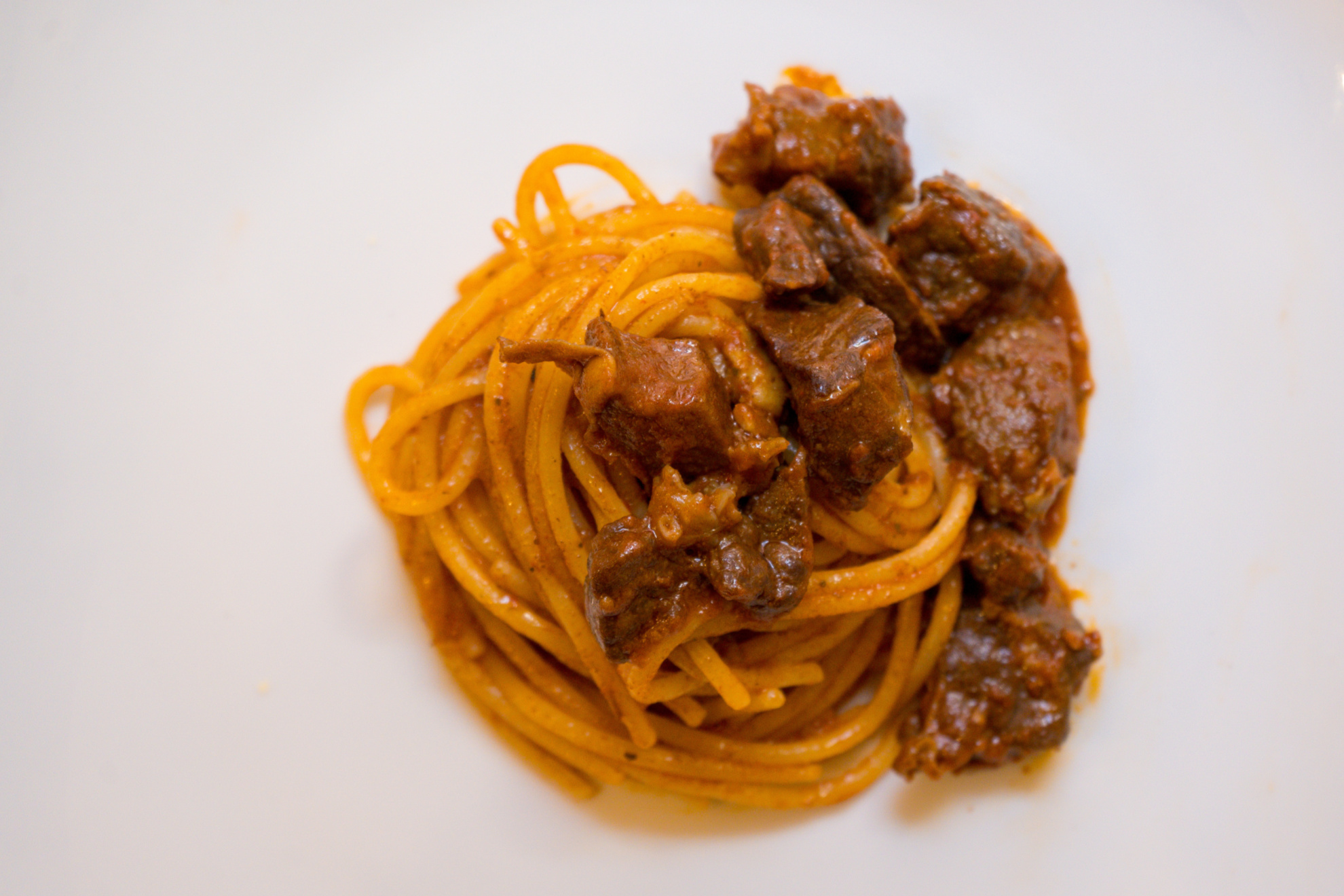
Today, the spicy soup is generally sold ready-made in aluminum bowls, which are more practical but less charming. However, the almost ancestral value of the dish does not change one iota: just go home, pour into a pan and add a little water. Immediately the kitchen will be filled with aromas from the farmyards and farms where the entrails were prepared and cooked immediately. This is what we today would call zero kilometer food.
